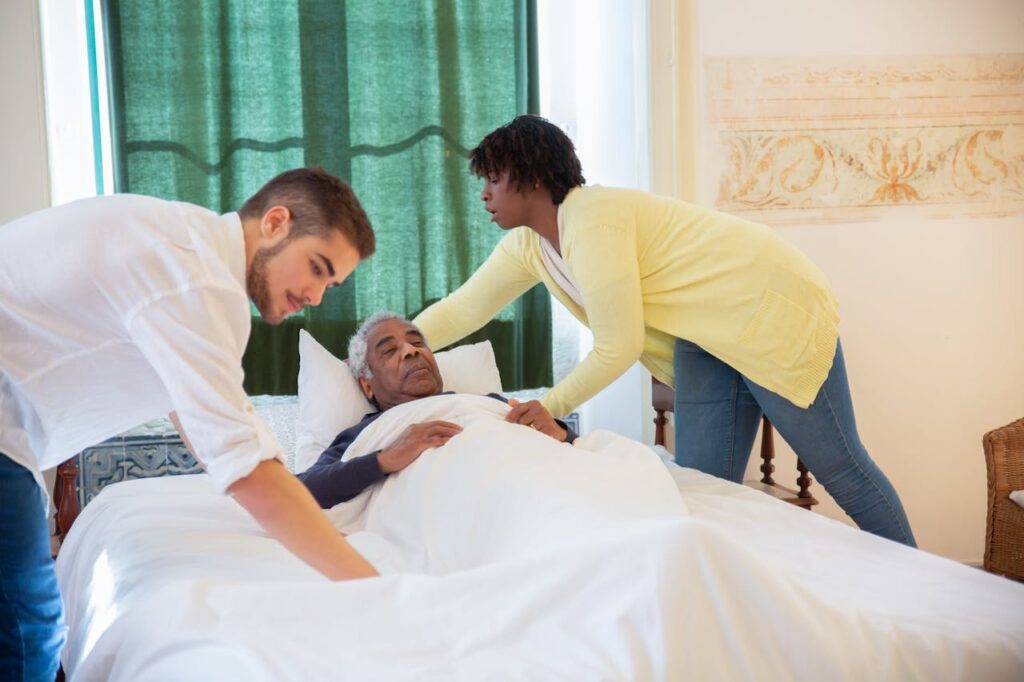
Standard precautions, sometimes called universal precautions, are safety procedures for avoiding contact with human bodily fluids, established by the Centers for Disease Control and Prevention (CDC) and the American Dental Association (ADA). The term universal precautions was used in the mid-1980s, when the practice was first introduced by the CDC in response to the discovery that HIV and hepatitis B infections can be transmitted by blood and other body fluids. Hepatitis C was subsequently added as one of the illnesses that can result from microorganisms being transmitted through contaminated blood and body fluids. The word universal was used in the 1980s and 1990s to indicate that the precautions should be used with all patients regardless of HIV or other infection status in order to avoid charges of stigma or discrimination against individuals known to be infected with a bloodborne disease organism. The term standard precautions is the preferred term.
PURPOSE
Standard precautions are used in medical and dental offices to prevent the transmission of infectious diseases between patients and healthcare workers. A 1988 CDC report defined the purpose of standard precautions as “[prevention of] parenteral, mucous membrane, and nonintact skin exposures of healthcare workers to bloodborne pathogens.” Other body fluids covered by standard precautions include semen, vaginal secretions, cerebrospinal fluid (CSF), synovial fluid, pleural fluid, peritoneal fluid, pericardial fluid, and amniotic fluid. However, the CDC considers blood to be the most significant source of pathogen transmission between patients and healthcare workers. Standard precautions do not apply to fecal matter, nasal discharges, sputum, sweat, tears, urine, and vomited material unless they contain visible blood.
DESCRIPTION
Standard precautions are standards of infection control practices designed to reduce the risk of transmission of bloodborne infections. The major premise of standard precautions is it should be assumed that everyone has an infectious disease and should be treated as such in terms of infection control protocols. It is not possible to determine if individuals have an infectious disease by just looking at them.Personal protective equipment
Protective equipment includes gloves, gowns, masks, and eyewear worn by healthcare workers to reduce the risk of exposure to potentially infectious materials.
Examination gloves are used for procedures involving contact with mucous membranes. They reduce the incidence of contamination to the hands, but they cannot prevent penetrating injuries from needles or other sharp instruments. Single use disposable gloves are changed after each patient and discarded and must never be washed or disinfected for reuse. Washing with surfactants may cause wicking (the enhanced penetration of liquids through undetected holes in the glove). Disinfecting agents may cause deterioration of the gloves. Utility gloves may be used when handling contaminated instruments and cleaning of the treatment area or sterilization room. Gloves should be removed before touching noncontaminated surfaces. Healthcare workers should wash their hands thoroughly after removing and discarding used gloves.
Fluid-resistant gowns, laboratory coats, or uniforms should be worn when clothing is likely to be soiled with blood or other bodily fluids. Reusable protective clothing should be washed separately from other clothes, using a normal laundry cycle. Protective clothing should be changed daily or as soon as visibly soiled. They should be removed before personnel leave areas of the dental office used for laboratory or patient-care activities.
Masks and protective eyewear, or chin-length plastic face shields, should be worn when splashing or spattering of blood or other body fluids is likely. A mask should be changed between patients or during patient treatment if it becomes wet or moist. A face shield or protective eyewear should be washed with appropriate cleaning agents when visibly soiled.
Resuscitation devices should be used rather than performing direct mouth-to-mouth resuscitation.Careful handling and disposal of sharps
Sharp disposable items, such as needles, saliva ejectors, rubber prophy cups, and scalpels that cannot be sterilized and are contaminated with blood or other body fluids need to be discarded in puncture-resistant containers. Special delivery companies pick up the containers once they are full and replace them with empty containers.Careful handling and cleaning of contaminated equipment
Dental and other medical instruments must be cleaned and sterilized after each use. Recommended sterilization methods include autoclaving or using a dry heat oven or chemiclave—a unit that cleans with the use of chemicals. Sterilization equipment is commonly found in a special area of the building away from the treatment areas.
Cleaning and disinfecting of all surfaces such as lights, drawer handles, and countertops is accomplished by a chemical solution formulated to kill infectious bacteria, spores, and viruses after each patient is seen. Medical facilities follow specific heat sterilization procedures outlined by the CDC. Plastic barriers cover items that are not easily disinfected by chemical spray, such as light handles, chair control buttons, and instrument trays. Many offices and hospitals have seamless floors with linoleum or a laminate surface so that spills can be contained and cleaned quickly.
Non-critical items that cannot be heat-sterilized are sterilized by immersion in a chemical bath formulated to kill infectious bacteria and viruses.
Standard precautions are intended to supplement rather than replace recommendations for such routine infection control as hand washing.
PREPARATION
Proper planning and management of supplies needed for standard precautions are essential in reducing the occupational risk of infectious diseases. Such measures should include, but are not limited to, the following:
- risk assessment
- setting of standards and protocols
- risk reduction
- postexposure measures
- first aid
COMPLICATIONS
Complications include the possible increase of medical and dental fees to the patient to offset costs associated with the equipment, disinfectants, and sterilization procedures needed for universal precautions.
RESULTS
Standard precautions are designed to reduce the transmission of infectious diseases among patients, healthcare workers, and first responders.
HEALTHCARE TEAM ROLES
Standard precautions require all medical and dental staff personnel involved in patient care to use appropriate personal protective equipment. Guidelines for healthcare settings for discarding of waste material are under a separate code by individual state agencies and governmental departments.
The environment in which healthcare is provided is greatly affected by adhering to standard precautions, both for the patient and care providers. Measures that promote a safe work environment include:
- education of employees about occupational risks and methods of prevention of HIV and other infectious diseases
- provision of protective equipment
- provision of appropriate disinfectants to clean up spills of blood or other body fluids
- easy accessibility of puncture-resistant sharps containers
- maintaining appropriate staffing levels
- measures that reduce and prevent stress, isolation, and burnout
- controlling shift lengths
- providing post-exposure counseling, treatment, and follow-up
KEY TERM
Anaphylaxis—A rapid, severe, and potentially life-threatening allergic reaction characterized by itching, throat swelling, and a drop in blood pressure. The most common causes are bee and wasp stings, certain foods, and certain medications.
Autoclave—A sterilization unit that uses steam under pressure.
Chemiclave—A sterilization unit that uses chemicals under pressure.
Dry heat oven—A sterilization unit that uses dry heat.
Latex—A milky fluid obtained from the rubber tree that is used to make natural rubber surgical gloves, condoms, dental dams, diaphragms, and other medical or surgical devices.
Pathogen——microorganism that can cause disease in another living organism. Pathogens include bacteria, viruses, fungi, prions, and parasitic worms.
Sharps—Needles and such cutting instruments as curettes and scalpel blades.
Stigma (plural, stigmata)—Any personal attribute that causes a person to be socially shamed, avoided, discredited, or treated in a discriminatory fashion. Such bloodborne infections as HIV are a common cause of stigma.
Surfactant—Any compound that lowers the surface tension of a liquid. Surfactants include detergents, wetting agents, and foaming agents.
Resources
BOOKS
Damani, N.N. Manual of Infection Prevention and Control, 4th ed. New York: Oxford University Press, 2019.
Jarvis, William R., ed. Bennett & Brackman’s Hospital Infection, 7th ed. Philadelphia: Lippincott Williams & Wilkens, 2022.
PERIODICALS
Bingham, J., G. Abell, L. Kienast, et al. “Healthcare Worker Hand Contamination at Critical Moments in Outpatient Care Settings.” American Journal of Infection Control 44, no. 11 (November 2016): 1198–202.
Centers for Disease Control and Prevention. “Perspectives in Disease Prevention and Health Promotion Update: Universal Precautions for Prevention of Transmission of Human Immunodeficiency Virus, Hepatitis B Virus, and Other Bloodborne Pathogens in Health-Care Settings.” Morbidity and Mortality Weekly Report 37 (June 24, 1988): 377–88.
Centers for Disease Control and Prevention (CDC). “Recommendations for Preventing Transmission of Human Immunodeficiency Virus and Hepatitis B Virus to Patients During Exposure-Prone Invasive Procedures.” Morbidity and Mortality Weekly Report 40 (July 12, 1991): 1–7.
Cohen, C. C., Y. J. Choi, and P. W. Stone. “Costs of Infection Prevention Practices in Long-term Care Settings: A Systematic Review.” Nursing Economics 34, no. 1 (2016): 16–24.
WEBSITES
Centers for Disease Control and Prevention. “Healthcare Infection Control Practices Advisory Committee (HICPAC).” https://www.cdc.gov/hicpac/pubs.html (accessed January 29, 2022).
Centers for Disease Control and Prevention. “Infection Control in HealthCare Facilities.” https://www.cdc.gov/flu/professionals/infectioncontrol/ (accessed January 29, 2022).
Centers for Disease Control and Prevention. “Infection Prevention and Control in Dental Settings.” https://www.cdc.gov/oralhealth/infectioncontrol/index.html (accessed January 29, 2022).
Centers for Disease Control and Prevention. “Protecting Healthcare Personnel.” https://www.cdc.gov/hai/prevent/ppe.html (accessed January 29, 2022).
Centers for Disease Control and Prevention. “Updated U.S. Public Health Service Guidelines for the Management of Occupational Exposures to HIV and Recommendations for Postexposure Prophylaxis.” https://stacks.cdc.gov/view/cdc/20711 (accessed January 29, 2022).
U.S. Department of Labor, Occupational Safety and Health Administration. “Universal Precautions.” https://www.osha.gov/SLTC/etools/hospital/hazards/univprec/univ.html (accessed January 29, 2022).
ORGANIZATIONS
American Dental Association, 211 East Chicago Avenue, Chicago, IL 60611-2678, (312) 440-2500, http://www.ada.org/ .
Centers for Disease Control and Prevention, 1600 Clifton Road, Atlanta, GA 30333, (800) CDC-INFO (232-4636), TTY: (888) 232-6348, cdcinfo@cdc.gov, https://www.cdc.gov/ .
Occupational Safety and Health Administration (OSHA), 200 Constitution Avenue NW, Washington, DC 20212, (800) 321-6742, http://www.osha.gov/index.html .
Cindy F. Ovard, RDA
Revised by Melinda Granger Oberleitner, DNS, RN
Disclaimer: This information is not a tool for self-diagnosis or a substitute for professional care.
Full Text: COPYRIGHT 2023 Gale, part of Cengage Group
Ovard, Cindy F., and Melinda Granger Oberleitner. “Standard Precautions (Universal Precautions).” The Gale Encyclopedia of Nursing and Allied Health, edited by Jacqueline L. Longe, 5th ed., vol. 6, Gale, 2023, pp. 3453-3456. Gale Health and Wellness, link.gale.com/apps/doc/CX8506401132/HWRC?u=slnsw_public&sid=bookmark-HWRC&xid=e1798a95. Accessed 1 Aug. 2024.
